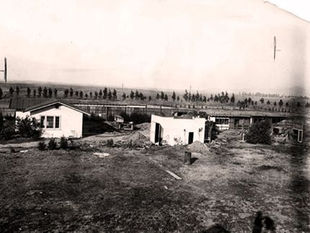
Episode 102: Blood on the Streets: The St. Valentine's Day Massacre
Dec 31, 2024
3 min read
0
1
0
The city of Chicago in the 1920s was alive with the energy of the Jazz Age—its streets humming with ambition, its skyline soaring. But beneath this bustling exterior, a far darker story unfolded: one of ruthless gangsters, bloody rivalries, and a city gripped by organized crime. Among the many infamous episodes in Chicago’s violent history, the St. Valentine’s Day Massacre stands out as one of the most brutal and baffling. On the morning of February 14, 1929, seven men were executed in cold blood, forever altering the course of the city’s criminal history.

The backdrop to this massacre was the volatile world of Prohibition—an era intended to curb crime but instead creating a fertile ground for organized criminals to thrive. At the heart of Chicago’s gang wars were two powerful figures: Al Capone, the South Side’s Italian bootlegger and kingpin, and George "Bugs" Moran, leader of the North Side Irish gang. Their bitter feud was not just a struggle for control of the city’s illegal liquor trade, but a battle for power, pride, and survival in a brutal underworld.
On the morning of the massacre, four gunmen—two disguised as police officers—entered a garage on North Clark Street, a base of operations for Moran’s gang. With terrifying precision, they lined up six of Moran’s men against a brick wall and executed them with Tommy guns and shotguns. Among the dead were hardened criminals, but also an outsider—Reinhardt Schwimmer, an optometrist who dabbled in the criminal world. Miraculously, the intended target, Bugs Moran, managed to escape, but his men were not so lucky.
The massacre was a shocking escalation in the bloody turf war between the two gangs. Yet, despite Capone’s obvious involvement in the underworld, the true mastermind behind the attack remains a subject of debate to this day. While many assumed Capone ordered the hit, there was never enough evidence to charge him directly. The investigation yielded few concrete results, and theories swirled, ranging from police corruption to political rivalries. Even Bugs Moran himself was briefly suspected of orchestrating the killings to eliminate troublesome members of his gang.
The brutality of the massacre sent shockwaves through the city and the nation. For a time, it seemed like Chicago’s lawlessness could never be tamed. The massacre pushed both local and federal authorities into action, marking a turning point in the government’s approach to organized crime. But while Capone was never convicted for the massacre, the mounting pressure ultimately led to his downfall. In 1931, Capone was convicted of tax evasion, a crime far removed from the bloodshed of the streets. His conviction marked the end of an era of unchecked gang violence and set the stage for a new wave of law enforcement against organized crime.

Today, the St. Valentine’s Day Massacre remains a chilling symbol of the lengths to which ambition, power, and violence can go. It’s a stark reminder of the dangers of an unchecked criminal underworld, and of the corrupt systems that enable such brutality to flourish. The massacre also serves as a testament to the enduring legacy of the Prohibition era, one that left a mark on the American psyche and the history of organized crime.
The bloodshed of that fateful February morning is long gone, but its impact continues to reverberate. The St. Valentine’s Day Massacre, the day love died in Chicago, stands as one of the most infamous episodes in the city's dark history. It is a story of betrayal, power, and the violent consequences of a lawless world, where loyalty is fleeting, and death can come swiftly for those who dare to play the game.





